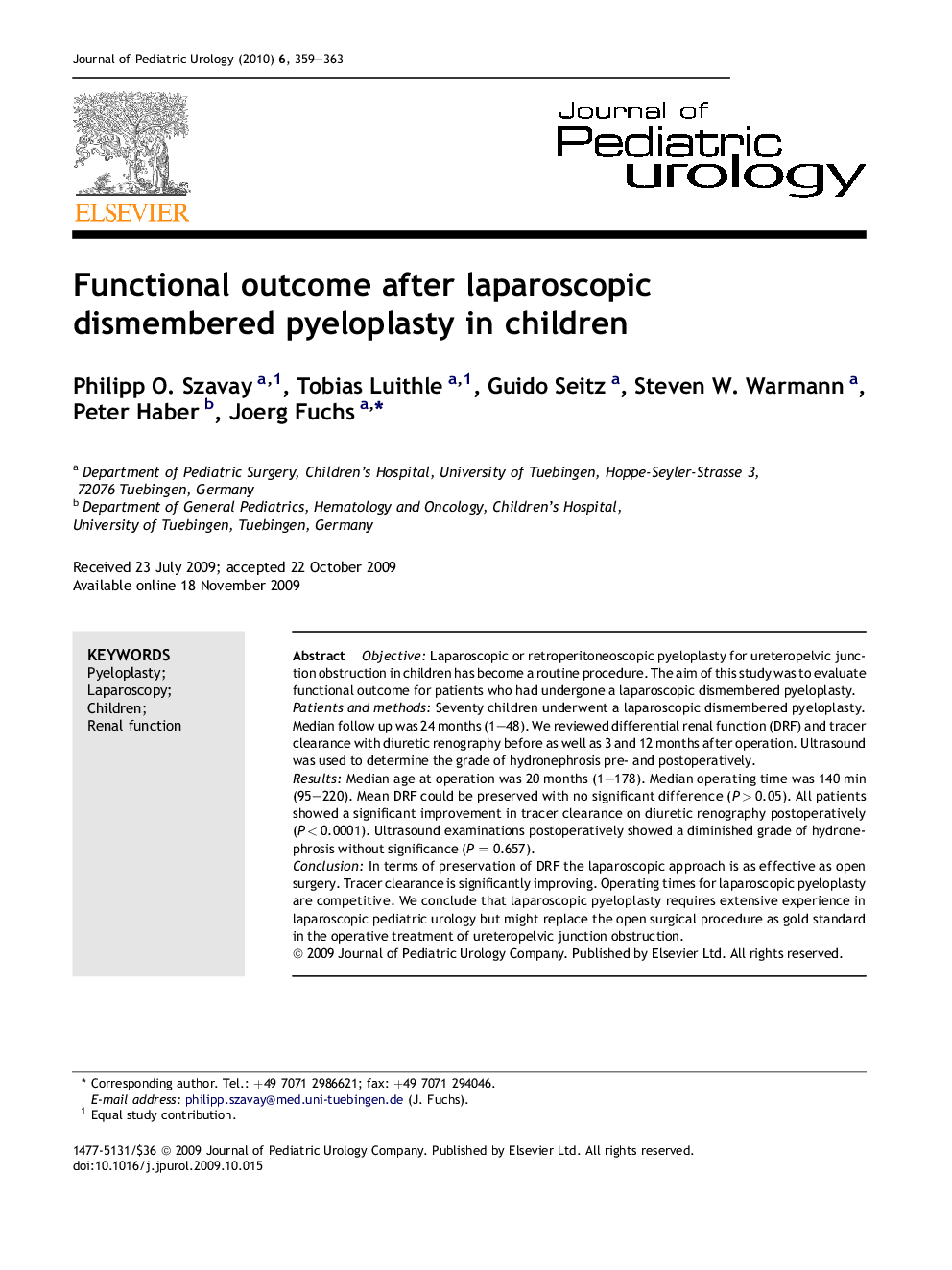| Article ID | Journal | Published Year | Pages | File Type |
|---|---|---|---|---|
| 4163293 | Journal of Pediatric Urology | 2010 | 5 Pages |
ObjectiveLaparoscopic or retroperitoneoscopic pyeloplasty for ureteropelvic junction obstruction in children has become a routine procedure. The aim of this study was to evaluate functional outcome for patients who had undergone a laparoscopic dismembered pyeloplasty.Patients and methodsSeventy children underwent a laparoscopic dismembered pyeloplasty. Median follow up was 24 months (1–48). We reviewed differential renal function (DRF) and tracer clearance with diuretic renography before as well as 3 and 12 months after operation. Ultrasound was used to determine the grade of hydronephrosis pre- and postoperatively.ResultsMedian age at operation was 20 months (1–178). Median operating time was 140 min (95–220). Mean DRF could be preserved with no significant difference (P > 0.05). All patients showed a significant improvement in tracer clearance on diuretic renography postoperatively (P < 0.0001). Ultrasound examinations postoperatively showed a diminished grade of hydronephrosis without significance (P = 0.657).ConclusionIn terms of preservation of DRF the laparoscopic approach is as effective as open surgery. Tracer clearance is significantly improving. Operating times for laparoscopic pyeloplasty are competitive. We conclude that laparoscopic pyeloplasty requires extensive experience in laparoscopic pediatric urology but might replace the open surgical procedure as gold standard in the operative treatment of ureteropelvic junction obstruction.
